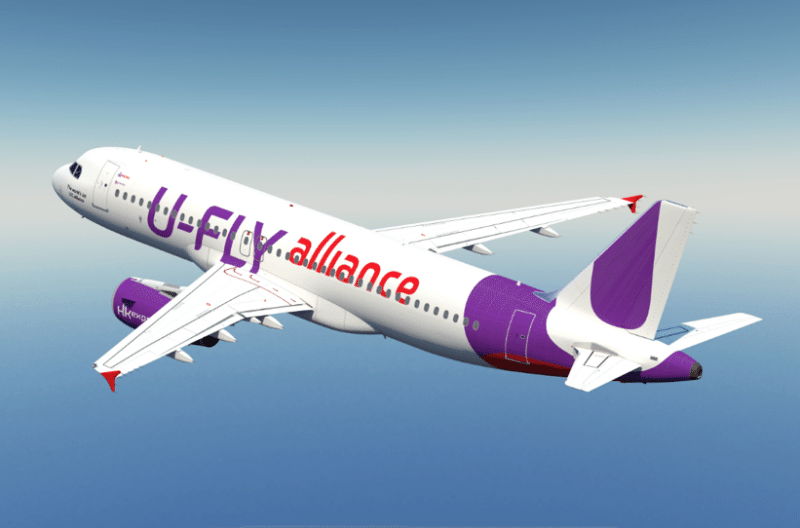Skift Take
Making history as the world’s first low-cost carrier alliance is one thing. Will history judge the U-FLY alliance, comprising five LCCs in North Asia, as a game-changer that’s able to get fiercely independent players to work together?
 Editor’s Note: Skift launched a new series, Gateway, to broaden our news coverage geographically with first-hand, original stories from correspondents embedded in cities around the world.
Editor’s Note: Skift launched a new series, Gateway, to broaden our news coverage geographically with first-hand, original stories from correspondents embedded in cities around the world.
We are featuring regular reports several times per week from Beijing, Singapore and Cape Town, and look for us to add other cities soon. Gateway Singapore, for example, signifies that the reporter is writing from that city although her coverage of the business of travel will meander to other locales in the region. Read about the series here, and check out all the stories in the series here.
With a lot of small low-cost carriers in Asia hitting a brick wall in expansion, the U-FLY alliance believes it has the potential to break out of its North Asian roots into Southeast Asia and South Asia, and even beyond the region in attracting longhaul low cost carriers keen for connectivity to Asia.
But that’s like a baby jumping before it can walk. First it has to prove that independent LCCs, which have been averse to cooperating with others, can jump that hurdle.
Unlike full-service carriers, the LCC model of unbundling ancillaries also makes it inherently difficult for these carriers to cross-sell one anothers’ product. Connectivity is yet another issue: In bustling Asian airports like Hong Kong or China, slot constraints make any attempt to connect schedules a headache; or then many airports in say, China, are simply not built to connect traffic.
Above all, imagine asking LCCs to pay for the overhead and management fees of joining an alliance?
Launched in January 2016 by four LCCs – HK Express (Hong Kong), Lucky Air (Kunming, China), Urumqi Air (Urumqi, China) and West Air (Chongqing, China) – U-FLY knows the challenges well.
In July, it hired in LCC veteran, Steven Greenway, as deputy CEO to develop partnerships, streamline businesses and implement commercial strategies under CEO Andrew Cowen and alliance board chairman Jimmy Ma, president of HK Express which owns U-FLY.
Greenway was head of commercial at Scoot, an LCC owned by Singapore Airlines, and was an independent consultant for several years advising brands such as Peach Aviation (Japan).
Interviewed at the Aviation Festival Asia in Singapore recently, Greenway says there are lots of small LCCs in Asia with less than 100 aircraft that are confined to their domestic market and are finding it difficult to break out of their geographical fix.
“There’s only so much domestic market you can stimulate,” Greenway says. “We’ve seen a number of LCCs set up subsidiaries in the region, for instance, Air Asia Thailand or Jetstar Asia, but that too is slowing down and in some cases going in the reverse. Jetstar Hong Kong got rejected by local authorities, who claimed that it was run out of Melbourne, which is true to a certain extent, while AirAsia had a close call in India (over whether it’s an Indian-controlled airline). You see all these barriers coming out.
The question for some of theses LCCs is how to spur growth.
“How do you grow? One way is through partnerships,” says Greenway.
There is a lot of “fluidity” in the market as various airlines watches who’s sleeping with whom, even if they are strange bedfellows. The crisscrosses can be full-service airlines working with LCCs that don’t belong to any alliance; legacy platforms attempting to accommodate LCCs to varying degrees of success, and members of global alliances forming new partnerships, which raises the question of whether global alliances are producing enough benefits for them.
“Qantas is a good example,” Greenway says. “It’s still a member of oneworld but has a deep relationship with Emirates, which reflects oneworld may not necessarily satisfy their requirements.”
Enter LCC Alliance 2.0
LCC alliances are a relatively new phenomenon but whether they are the next big thing is still up in the air, Greenway admits. “It’s very experimental at the moment but that’s better than sitting on the bench doing nothing,” he says. “We have to prove that the concept is demonstrably productive and beneficial to members. Otherwise we deserve to die.”
So what has been achieved in just over a year at U-FLY? It welcomed a fifth member Eastar Jet (South Korea) in July, bringing the combined fleet of aircraft to 111 serving over 23 million passengers to 106 destinations and 206 city pairs in North Asia. A U-FLY Alliance livery is now on two aircraft, one on West Air and the other HK Express.
Beyond the visible, it’s the “boring” stuff the alliance does that Greenway believes will yield case studies of tangible results which it can flaunt to LCCs.
In true LCC fashion, the focus has been on costs. First up is the structure and model itself. Unlike global alliances, U-FLY is a company with a proper P&L and a board comprising CEOs of member airlines. It funds itself by taking “a very small cut” of a range of services it offers to members, including a percentage of better deals with suppliers on fuel or ground handling, or incremental revenue through interlining via a global distribution system and business to consumer promotions on its website.
“So members get reduced costs, incremental revenue and pay nothing in overheads,” says Greenway, adding that also in true LCC methodology, the U-FLY team is all of six people. There are no joining fees though it charges “a very small” yearly fee.
Mindful of their need for independence, members are not forced to buy the range of services U-FLY offers, although all five have signed on for HK Express’ loyalty program, and ABB technology which enables them to interline and cross-sell one another’s product.
Greenway says while incremental traffic through interlining and cross-selling is important, the “attack” has been on cost-savings, particularly in the current market of suppressed yields.
“A lot of small LCCs never had the opportunity to get cost-savings. With 20 to 30 aircraft, they may have good crewing costs and lease costs on aircraft, but struggle to get to the cost base of the AirAsia’s and Jetstar’s because they don’t have group buy. I probably spend a tenth of the effort to save a dollar (through bargaining power) than raising a dollar by increasing connecting traffic,” he says.
Increasing Number of Member Airlines
U-FLY is fine-tuning its model with the five LCCs although it expects to have 10 members by year-end, and they need not be just LCCs.
“There are many airlines out there, even full-service carriers, with 50 or so aircraft. Few get to above 100 aircraft. If they are around the same size, are like-minded, are confronted by the same challenges, they are a logical fit. Not a carrier who’s lightyears away coming in and telling you how to do it,” says Greenway.
What also bodes well for U-FLY is longhaul LCCs eyeing Asia, he believes. “Typically they operate aircrafts with 350 to 400 seats. That’s a lot to fill over a long range and there is propensity to lose a lot of money if you don’t get it right. You need feed.
“Carriers coming into Hong Kong are talking to us as they know they can’t rely just on the Hong Kong market to fill their planes. And they also want their overseas passengers to go to destinations they don’t serve,” says Greenway.
The Daily Newsletter
Our daily coverage of the global travel industry. Written by editors and analysts from across Skift’s brands.
Have a confidential tip for Skift? Get in touch
Tags: alliances, gateway, lccs
Photo credit: The U-FLY alliance has five airline members in China, Hong Kong and South Korea. The livery is now on two aircraft, one on West Air and the one pictured is on an HK Express plane. U-FLY
